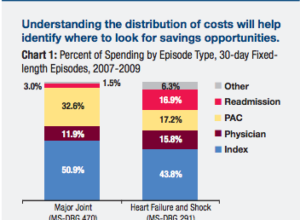Healthcare is evolving quickly and in exciting directions. Innovations in technology and communication are opening up new realities of care provision that will improve accessibility, mobilize actionable intelligence, and ultimately empower us to take improved ownership of our health.
Healthcare is evolving quickly and in exciting directions. Innovations in technology and communication are opening up new realities of care provision that will improve accessibility, mobilize actionable intelligence, and ultimately empower us to take improved ownership of our health.
More will change over the next 15 years than the previous 50 combined: remote monitoring, advanced real-time analytics, wearables involving the Internet of Things, payment reform, machine-to-machine learning, and virtual care. These advancements are all examples of this rampant innovation, and a highly exciting and effective adoption of these technologies will likely dictate tomorrow’s market leaders.
Trends on the Horizon
The Internet revolutionized the travel, banking, and retail industries; technology is now set to transform healthcare. The following trends will play big roles as the field of healthcare evolves over the next decade:
1. Advancements in Wearable Tech
Wearable activity trackers and heart-rate monitors are only the beginning. Twenty-four percent of consumers already use mobile apps to track their health and wellness metrics, and nearly half would consider doing so in the near future. As mobile app capabilities increase — from tracking blood pressure and glucose to measuring stress levels and sleep disturbances — those numbers are bound to rise. Armed with actionable, personalized information, people will be better able to steer clear of the doctor’s office.
2. Increased Demand for Telemedicine
Technology has a powerful way of connecting people and systems more effectively and at scale. Virtual care is already growing, and by 2018, it will be routine. Telemedicine has the power to connect specialists to rural Americans, but it also has the power to help urban individuals access care on the go, online, and according to their schedules.
What’s more, people will expect their smartphones, wellness trackers, and other wearable devices to alert them to impending health episodes like heart attacks or strokes, and in turn, they’ll want to be able to communicate immediately with remote specialists.
3. Greater Emphasis on Preventative Care
Giving patients more access and control over their health outcomes (and holding them accountable) feeds into a larger shift toward a culture of preventative care. Our traditional reactionary approach is a major contributor to the growth in chronic diseases (and the unsustainable rises in healthcare costs). A Frost & Sullivan survey estimates 80 percent of heart disease and Type 2 diabetes could be prevented by exercising more, eating better, and avoiding tobacco.
Programs that educate individuals and reward positive behavior have proven to be effective. The Frost & Sullivan survey predicts that free preventive care will become commonplace as medicine shifts its focus from illness- to wellness-oriented care.
4. Sharper Analysis of Big Data
Finally, big data will continue to drive innovation and intelligence both at the population health level and at the bedside. Real-time analytics, machine-to-machine learning, and data tracking will drive more complex requirements on compute cycles and analytics engines to extract more actionable knowledge. Data analysis can help draw associations between disease patterns and treatment outcomes and will result in more informed public health policies, improved medical protocols, and pharmaceutical breakthroughs — breakthroughs that McKinsey predicts will save $300 billion each year.
Such objectives may sound complex, but a large majority of organizations that are already analyzing patient-generated health data have reported significant returns on those investments. We’ll see next-generation healthcare networks investing in scalable connectivity options to get to data centers in order to capitalize on the untapped potential of big data.
Today’s Organizational Implications
While each of these trends promises to enhance the power of medicine, they’ll also stress the information technology (IT) capabilities of healthcare providers.
Organizations that will thrive in this new environment are those that can scale their network infrastructures as needed. Tools like cloud services, software-as-a-service products, and on-demand Ethernet connectivity can help meet these challenges.
The ongoing push to collect and connect more data comes with a corresponding need to increase security. Cyberattacks continue to accelerate, and as the risk spreads to include personal devices (such as Wi-Fi-enabled heart monitors), improved security will become ever more critical.
Meeting Tomorrow’s Challenges (and Opportunities)
The momentum of our entire society is sweeping healthcare forward in a wave of customization, personalization, and instantaneous communication. The trends outlined above aren’t just new and exciting — they also have the power to truly improve patient care and outcomes.
The process of achieving success will be a journey, and a few key approaches will help you get there:
- Gaining buy-in and coordinating with internal stakeholders: It’s important to get everyone trained on the same vision of the future. That way, everyone is following the same holistic road map to get there. A committee made up of people from your customer experience team, IT, department leads, chief medical information officers, and key partners will be invaluable in this regard.
- Designing a network for the future: As changes occur more rapidly, your network needs to be able to scale accordingly. Your organization should be able to integrate innovations and applications in a standardized and streamlined process. However, designing and operating networks is not necessarily part of a healthcare provider’s core competency. Choose communications providers who can deploy high-performing, secure, cloud-connected, and scalable network infrastructures. Ensure those providers are prioritizing investments toward building into your core locations.
- Implementing a security culture: Security starts at the top, but it’s carried out at all levels of your organization. A focus on security is critical at the leadership level so appropriate budgets are allocated to prioritize security measures. But real security spans personal, physical, and digital realms, and the threats are constantly evolving. It’s imperative that all players help institute and foster an overall culture of security.
The future of healthcare is unbelievably exciting. Providers that embrace innovation and invest in enabling technologies will be able to provide better care and add greater value.







